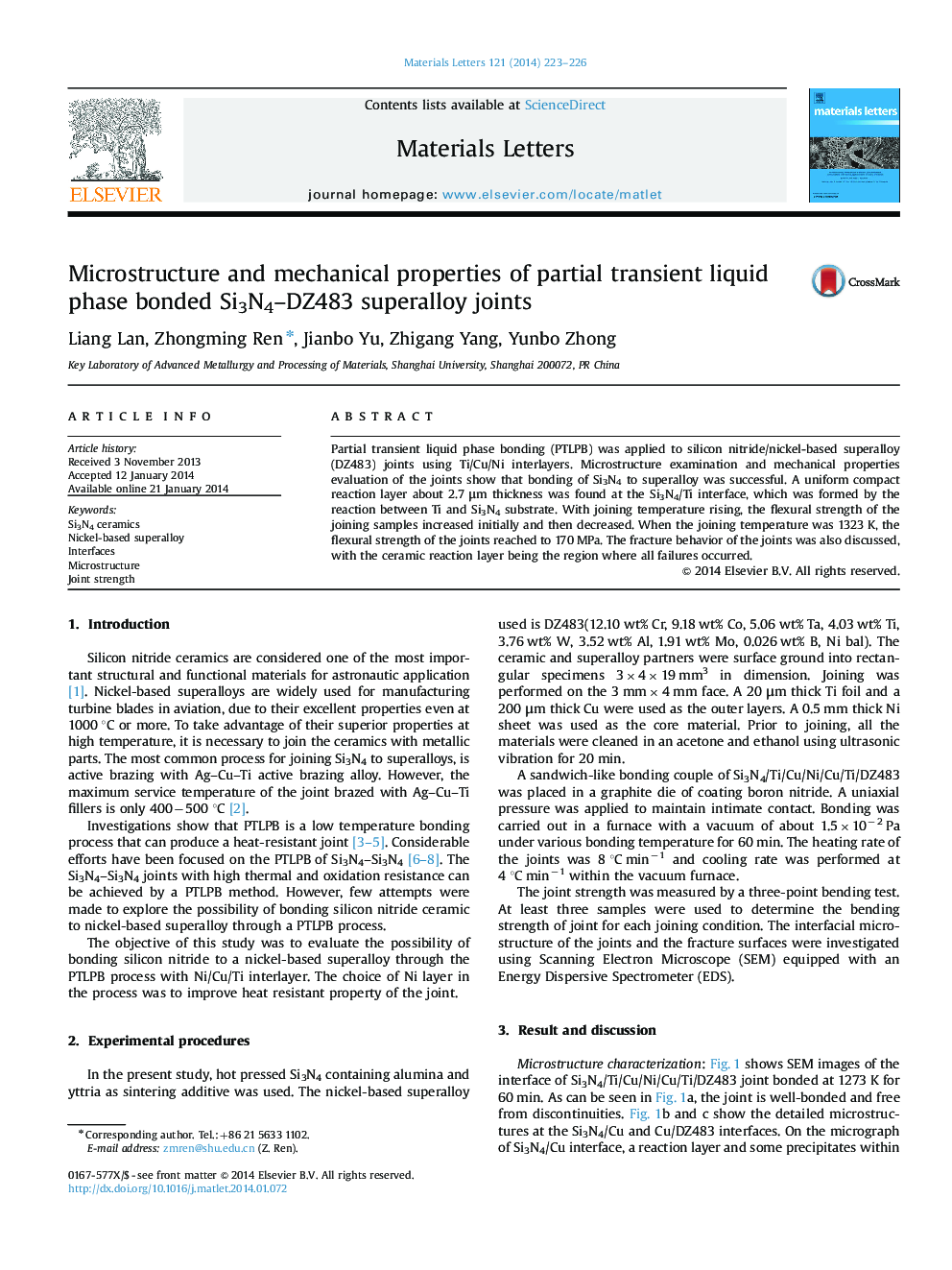| Article ID | Journal | Published Year | Pages | File Type |
|---|---|---|---|---|
| 1644186 | Materials Letters | 2014 | 4 Pages |
•We demonstrate the feasibility of joining Si3N4 to superalloy by a PTLPB process.•A uniform reaction layer about 2.7 μm thickness is formed at the Si3N4/Ti interface.•The maximum flexural strength of the joints obtained reaches to 170 MPa.•Such joints have a potential to be used at high temperature.
Partial transient liquid phase bonding (PTLPB) was applied to silicon nitride/nickel-based superalloy (DZ483) joints using Ti/Cu/Ni interlayers. Microstructure examination and mechanical properties evaluation of the joints show that bonding of Si3N4 to superalloy was successful. A uniform compact reaction layer about 2.7 μm thickness was found at the Si3N4/Ti interface, which was formed by the reaction between Ti and Si3N4 substrate. With joining temperature rising, the flexural strength of the joining samples increased initially and then decreased. When the joining temperature was 1323 K, the flexural strength of the joints reached to 170 MPa. The fracture behavior of the joints was also discussed, with the ceramic reaction layer being the region where all failures occurred.
